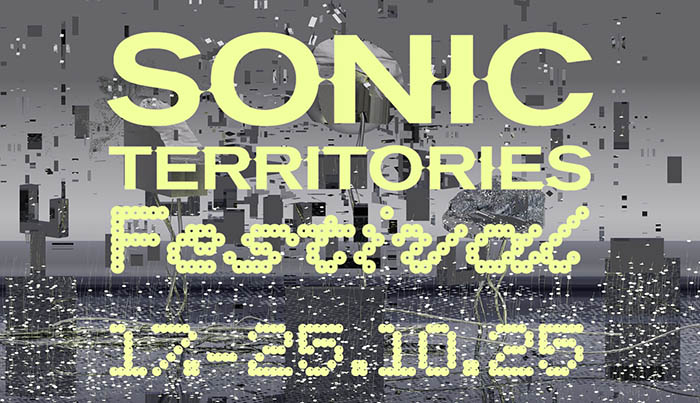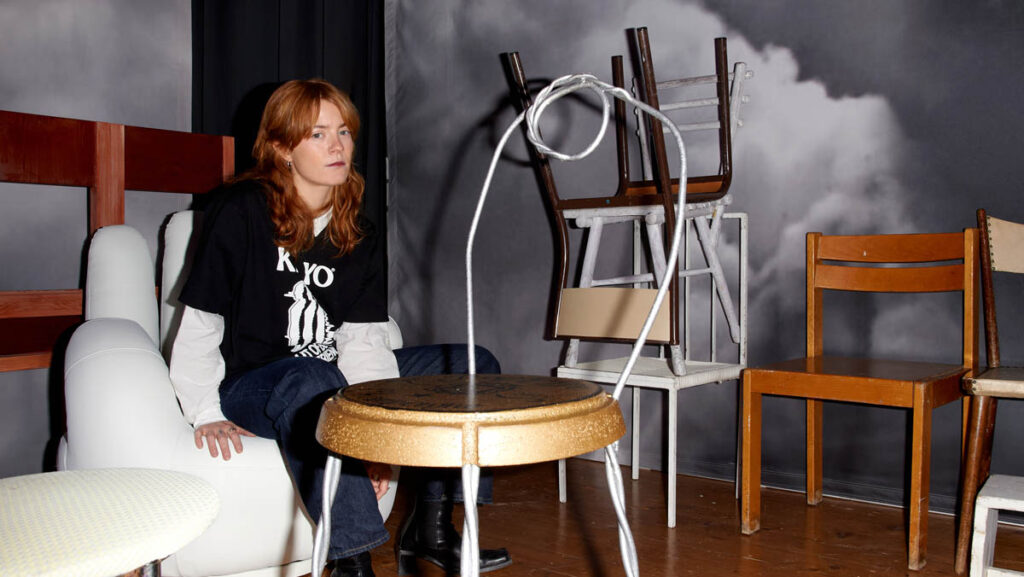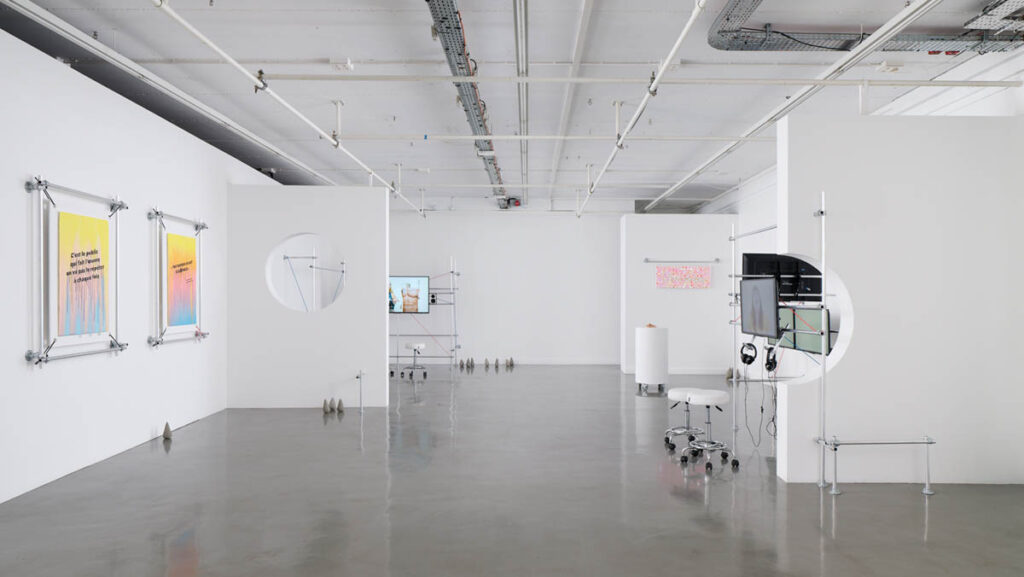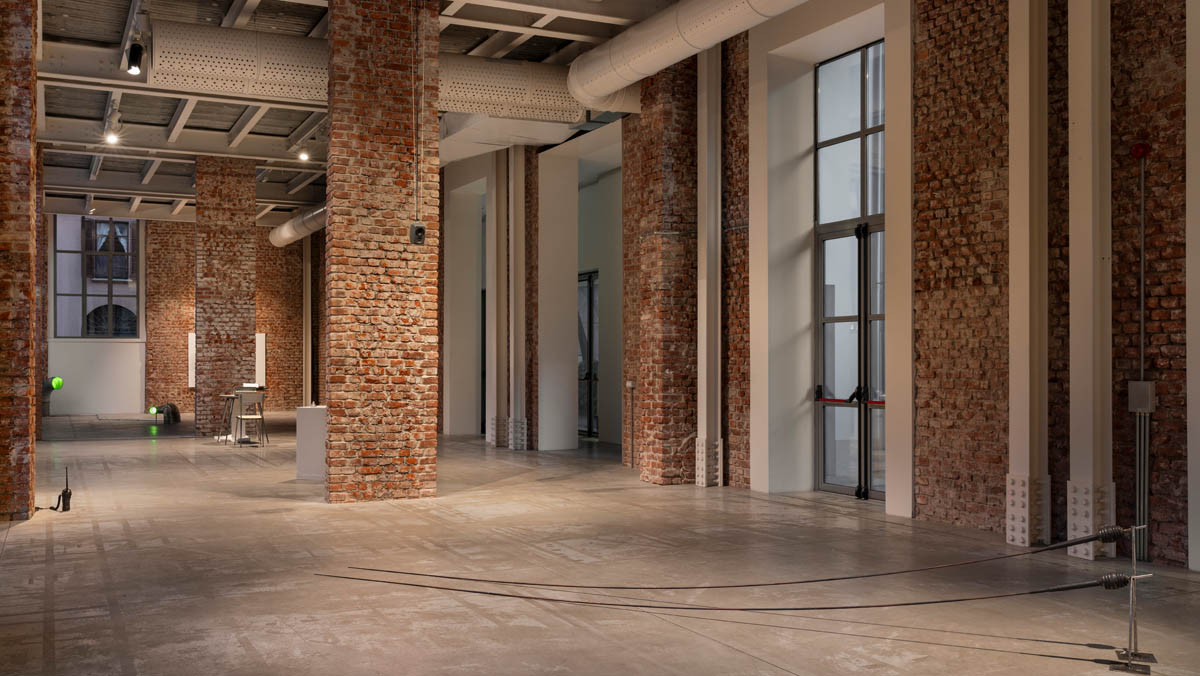
Immediately the structure is perceived and the movement is initiated; the eyes are busy while building their bricks, and yet already led to wander in the wake of a melancholy sound that leads elsewhere despite remaining here. What is outside? Is there the same air that is inside? Can my bricks liquefy, for a moment, and make me feel elsewhere? Perhaps it is the awareness — and responsibility — of lightness that makes me ask these questions, pushing me to seek a definition. But in the meantime, I keep walking. I walk slowly. When following a sound, or wandering through the air, that of definition becomes a complicated and pointless affair, and how can one define – by enclosing it in the meshes of language – a feeling of the soul limply caught between the awareness of emptiness and the desire to go away? “Fernweh”, from the German Fern: “Far” and Weh: “Nostalgia”. “Emptiness one feels in being trapped in the everyday,” “longing for a faraway place.”
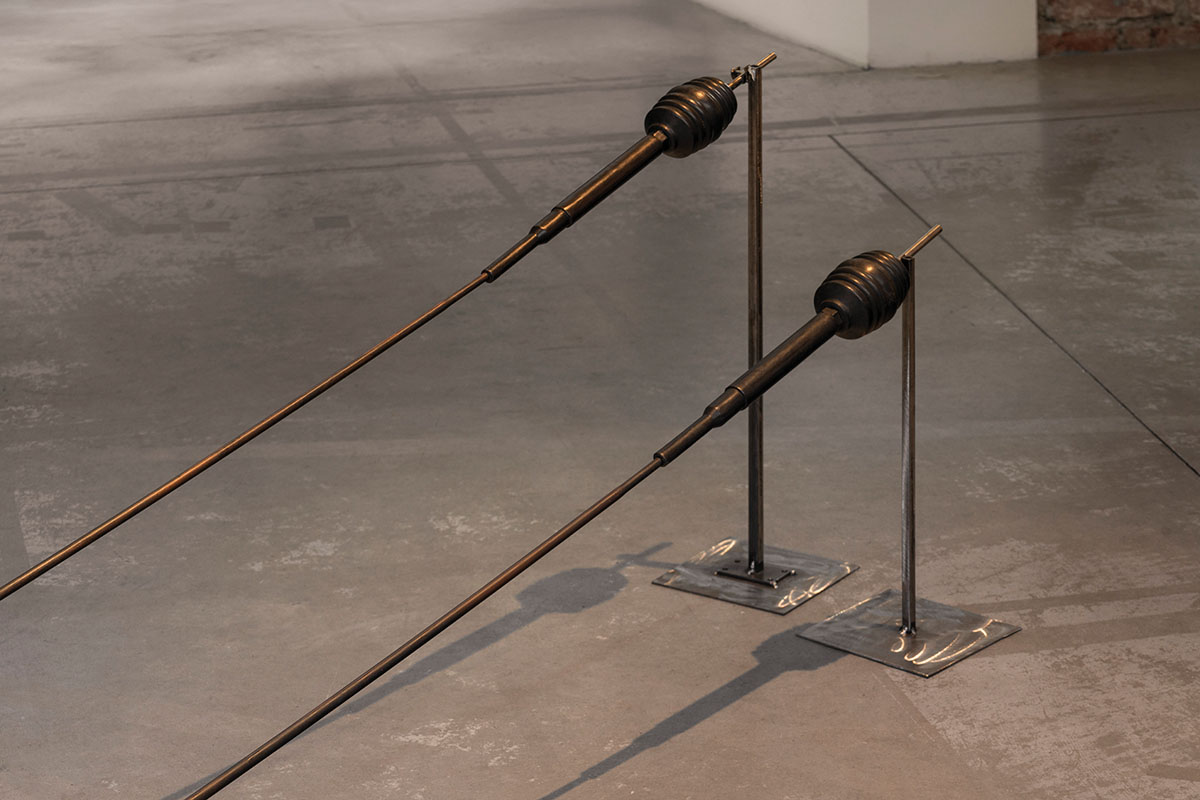
Riccardo Giancola
Not so much a definite state (“What is it?”), but rather a tension or even its aerial prelude, the molecules caught resting just before the tension itself: that minimal, double movement stretched between introspection and openness that the works along the exhibition, instead of explicating and making frontal, translate by keeping alive its secret ambiguity. Perhaps in this case the appropriate question is, “how do you move through an exhibition?” To question how much to pause in front of a work, how much to walk around it; to realize the interferences, the same ones that even outside — before and after — the exhibition continue to parade and generate movement in our bodies and thoughts. These are interferences — works —that do not require stasis or contemplation, so much as accompaniment, expansion, and perhaps trust. In Fernweh – /ˈfɛɾnˌveː/ – Atto II the provocation of the outside, sensed in all its seductive and fugitive dimension, returns. In their works, Casti and Andreoni momentarily bear witness to its presence, intercepting a grammar that resides at the edge of the invisible, always manifesting itself through the encounter and the awareness of a lacking Ego, resolved only in the relationship with its rest: the otherness that constantly surrounds it.
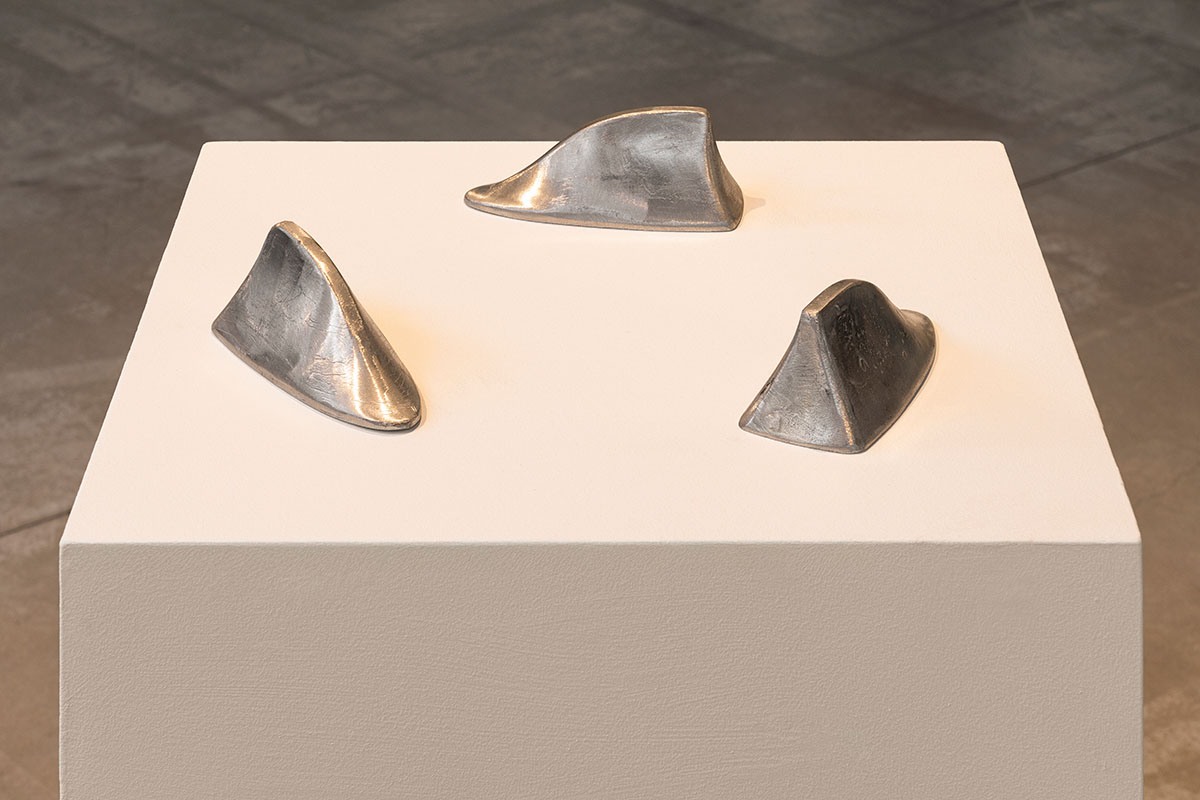
Andreoni’s sculptures Nello spazio e nel tempo (2024) and Untitled (2022) are, for example, materializations of this outside, and specifically of its latency: born from the casting, respectively in bronze and aluminum, of military antennas (in the former case) and shark fin antennas (in the latter). More than objects, they appear as reception spaces caught in a state of quiescence, as if waiting for a signal or, silently and secretly, already decrypting one emitted from somewhere unknown. Although different in size, both seem to reach out toward their exterior — all their exterior, including visitors — through forms that creep into the space: that is the emptiness around given by the breadth of the rooms on the Casa degli Artisti ground floor in which, among the voices of the people, two looped audios coming from a loudspeaker hanging from the ceiling — Endless Ends (2023) — and from a portable radio resting on the floor — I’m ready (2022) — also blend in. The space is reconfigured, thus becoming a magnetic field populated by invisible waves: Fernweh – /ˈfɛɾnˌveː/ – II Atto is born and built by amplifying this perception, witnessing its aesthetic possibility through works that propagate this silent magnitude of chances — they capture it, momentarily imprint it, continuing the infinite trajectory game. One could say that to pause in the state of “Fernweh“ is to accept the impossible mission of staging time, or rather, the body subject to its own passing.
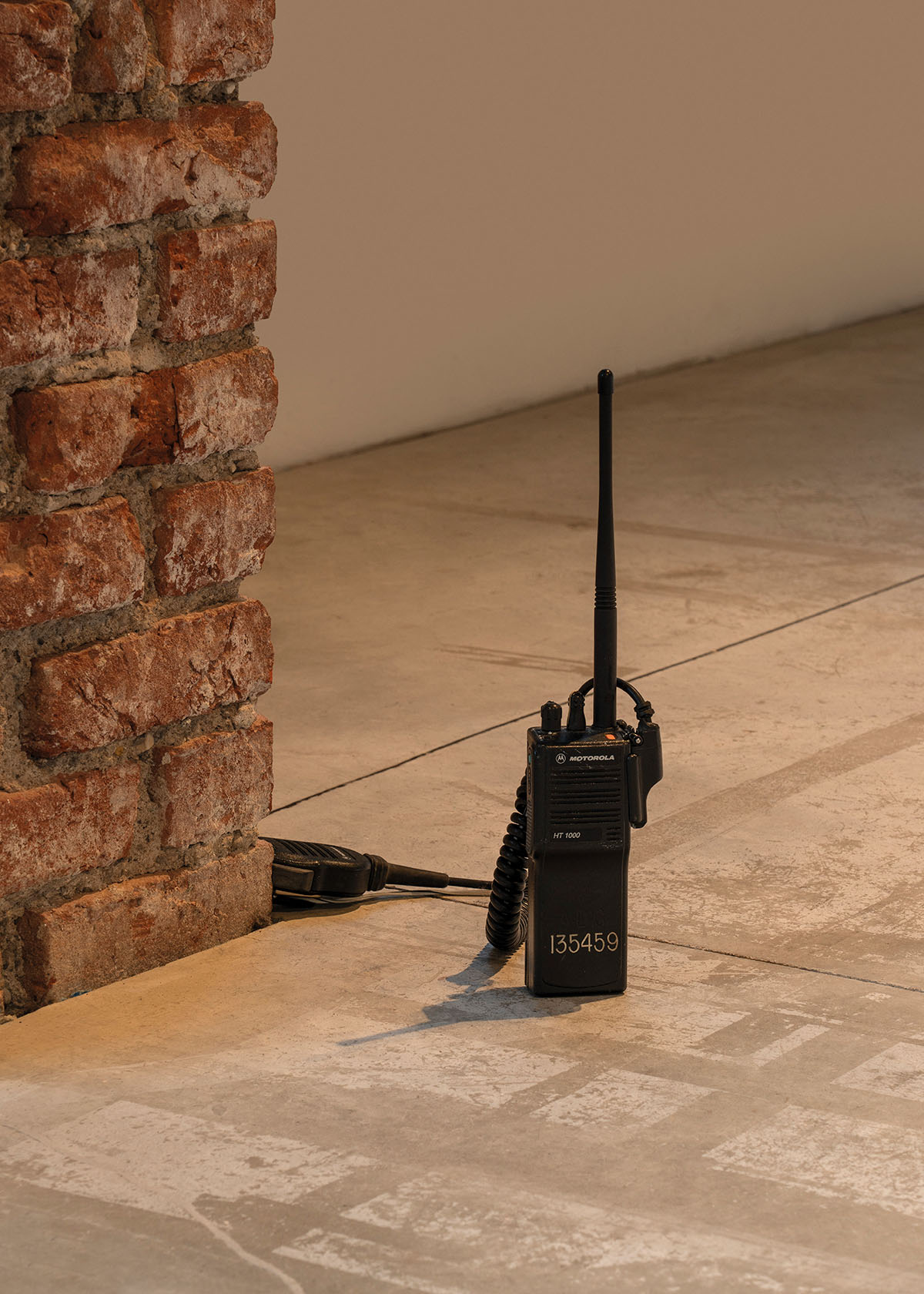
Ideally opening and closing the exhibition path are Roberto Casti’s two canvases ARIA (Composizione I) (2023) and ARIA (Composizione II) (2023): seemingly monochrome white canvases, which only up close reveal graphite marks and traces of paint made progressively by the artist during a dilated process inside his studio. I remember, when Roberto and I met, seeing them in the stages of their composition; and I also remember the day of the exhibition opening when, passing by them again, I thought that air does not compose itself but, simply, happens. The traces of its passing, of its time and the relationships it envelops, can only be light, aerial too: like a white noise that, closely, is actually very complicated. The buzzing of time can be grasped only in filigree, subtly and magnetically, through a self accepting its own amplification: so do Andreoni’s voices and antennas and so do Casti’s works, which deposit a veil of trust in the face of this structural shortcoming of the human being, too small for space and too mortal for time, yet always in the middle.
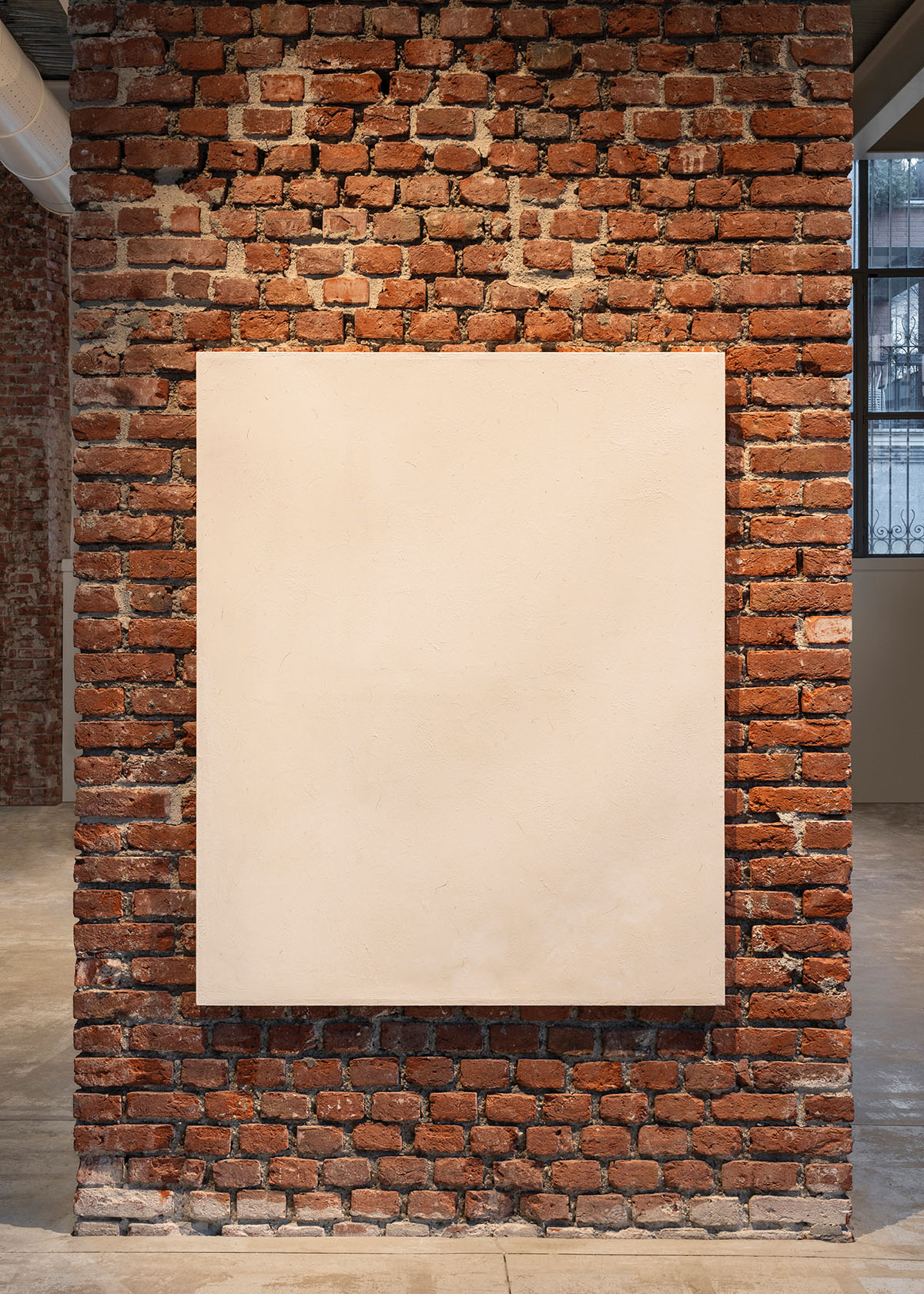
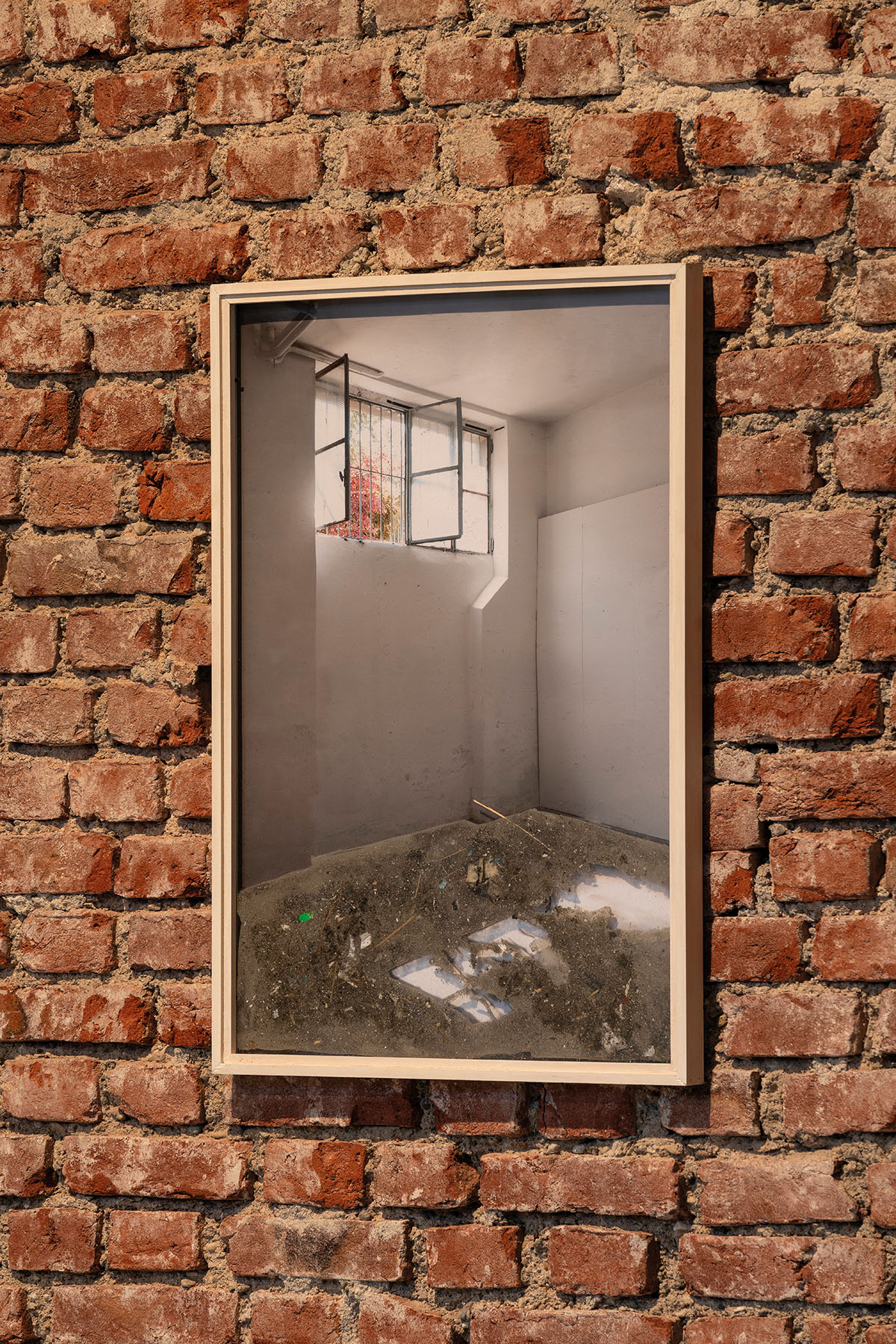
Ciò che abbiamo dimenticato è ancora qui (Studio di via Verro a Milano) (2024), a Casti’s studio photograph printed on paper, is a melancholic declaration of this trust, expressed by materializing precisely that layering of scraps, dust and debris accumulated and then taken up, stored and placed in the area of the image ‘containing’ the floor. Almost a contamination of the image itself, which literally becomes real dust, generating a conscious rippling of the artist’s gaze, affected by the invisible interference of time and relationships. Fernweh – /ˈfɛɾnˌveː/ – Atto II is an operation of spatiotemporal awareness. It is an act at once restless and serene, explored by Andreoni in its hypothetical aesthetic scaffolding – the antenna, the radio, the signal – and flexed by Casti into an existential and poetic fold. Here these two languages meet, both sharing that all-too-human tension of wondering about what could happen just after this moment, here and now, and finally landing in a strange, gaseous awareness. Neither here, nor there: “Fernweh“ is pausing in the middle, longing in the paralysis, looking out the window of the family home, dreaming of Buenos Aires, arriving at the dock to leave and eventually coming back, just as Eveline does in the fourth story of Dubliners, James Joyce’s book published in 1914 and, in this case, symbolic trigger for the two artists‘ contemporary translations.
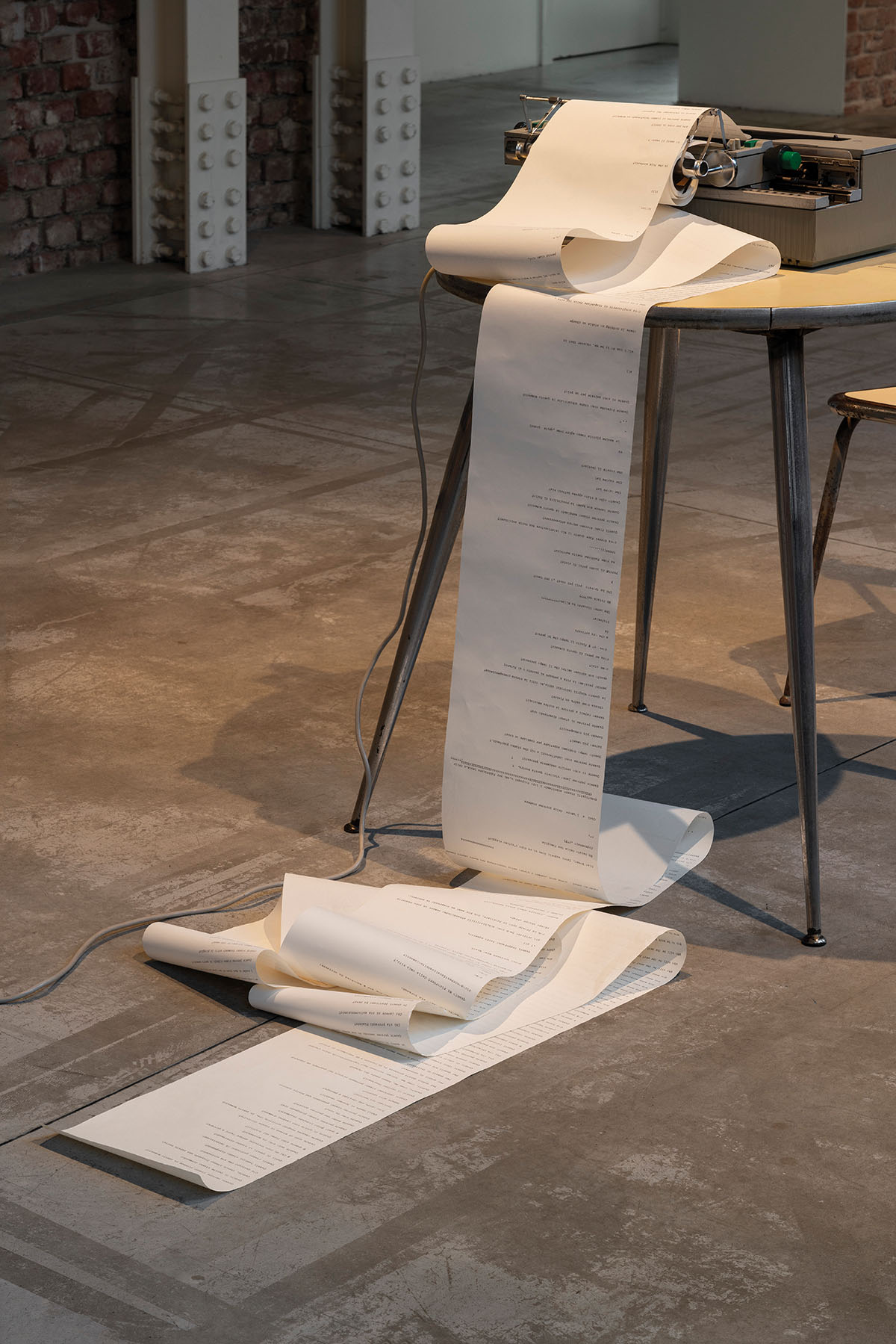
Tiziano Ercoli and Riccardo Giancola
Six years later, in 1920, Joyce would publish his monumental Ulysses, inaugurating the stream of consciousness narrative technique and blurring, in Leopold Bloom’s epic day, the boundaries of the inside and the outside, the subject and the world. Again, along with Joyce, the entire constellation of the first 20th century Central European literary avant-garde seemed to calibrate itself, albeit in different ways, to an increasingly pronounced introspection and estrangement of the outside world, which was shattering the very notion of a unified subject. In addition to Joyce, Casti and Androni silently refer to the anxieties of Franz Kafka, the reminiscences of Marcel Proust or the digressions of Robert Musil, by sharing their concerns a century later, in a world dangerously familiar to that in which these authors operated. The perception of a generalized and pervasive turbulence is the bridge that fills this temporal gap, and it is toward the interstices of this state that the exhibition channels attention, converting restlessness in a space of acceptance, encounter and shared questioning. The typewriter of which Casti’s Aleph (Milan-Berlin-Lisbon-Milan) (2023-ongoing) is composed, as well as the eponymous performance that took place on the opening day, are devices to activate this common encounter based on the need to ask unanswered questions: titanic explorations of the outside that have no landing place. They also stop in the middle, invisibly wandering in the air, like Andreoni’s radio waves or Casti’s canvases
How many people are thinking about the future?
How many are thinking about the present?
How many reflect on their complicity in maintaining an oppressive social order?
How much work to dismantle it?
How many feel overwhelmed?
How many feel hopeful?
How many are afraid?
…
Exhibition: Friedrich Andreoni and Roberto Casti: Fernweh – /ˈfɛɾnˌveː/ – Atto II
Exhibition duration: 23.01.25 – 11.02.25
Address and contact:
Casa degli Artisti
Corso Garibaldi 89/A, Milan
www.casadegliartisti.org
Piermario De Angelis (Pescara,1997) is an independent researcher and curator. He lives and works in Milan, collaborating as writing contributor with contemporary art and aesthetic magazines such as Antinomie and Flash Art. In 2023-24 he worked as Head of Research to the publication of MASBEDO’s project Ritratto di Città (20/20000Hz), curated by Cloe Piccoli and is among the winners of the 11th edition of Italian Council (2022). He is co-founder of the non-profit cultural association Genealogie del Futuro: an editorial and research project aimed at addressing crucial socio-cultural issues through a horizontal and participatory way, blending online and offline spaces to configure the occasion of collective critical thinking. He conceives the act of writing as a productive concern, as well as a situated tool of participation and exploration of deep issues that lie underneath the messy surface of the contemporary.



